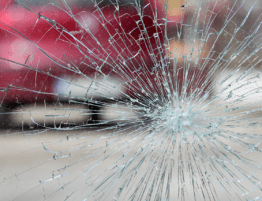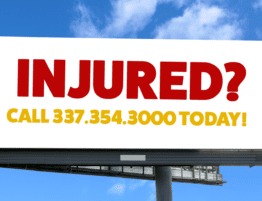
- It is important that your new drivers have as much practice as possible under the supervision of an experienced driver. You can start with short trips near your home, plan on which driving skills to focus the most on, be vocal and give advanced warning and be encouraging. Avoid yelling or talking down to your child.
- Outside of supervised driving time, there are other steps you can take to make sure your teen is safe and learns as much as possible like making sure the car your child is driving is a safe care—easy to maneuver, has adequate airbags, has tires without worn treads.
- Once your child obtains their driver’s license and begins to drive unsupervised, it is good to have safety rules in place for them. Some examples include: no cellphone use while driving, always put on their seat belt, check in with you after they drive and obey all traffic signs, speed limits and other laws.
- Accidents, however, aren’t preventable, so it’s important that your new driver knows what to do in case of an accident or emergency. Download and review our accident checklist with your teenager to ensure they know what to do and not do in case of an accident.
Letting your new driver get behind the wheel for the first time can be a nerve racking event. Studies have shown that motor vehicle crashes are the leading cause of death of teenagers in the United States. How do you prepare them to be a safe, defensive driver? The tips outlined below will help you to make the learning process as effective and safe as possible for your child.
Supervised driving
It is important that your new drivers have as much practice as possible under the supervision of an experienced driver.
- Begin with short trips from your home—less than five miles and/or around ten minutes. Gradually increase the length of the trips as your child’s confidence grows.
- Try to map out what route you will take them on before you leave, and explain it to your teen before leaving. That way, you can keep the trip to quiet side streets and avoid heavy thoroughfares.
- Plan on what driving skills you want to focus on teaching your child before each trip, such as changing lanes or making left turns.
- It is best to keep your talking to a minimum so as not to distract your young driver.
- Give your child advance warning of turns so that they have ample time to react and plan their maneuvers.
- Be on the lookout for road hazards and dangers. Adjust the passenger mirror so that you can use it as a rearview mirror.
- If they do make a mistake, have your child pull over so that you can explain what they did wrong. Try not to raise your voice or talk down to your teen. If you feel that tension is growing between you and your child, it is best to end the lesson.
Other Driving Tips
Outside of supervised driving time, there are other steps you can take to make sure your teen is safe and learns as much as possible.
- Make sure the car your child is driving is a safe care—easy to maneuver, has adequate airbags, has tires without worn treads.
- Be a good example as a driver, as teens mirror their parents’ driving habits.
- Explain what you are doing while you are driving to your child.
Safety Rules
Once your child obtains their driver’s license and begins to drive unsupervised, it is good to have safety rules in place for them. Some examples include:
- No cellphone use while driving
- Always put on their seatbelt
- Check in with you after they drive
- Obey all traffic signs, speed limits and other laws
- Don’t take unnecessary risks while driving
- Do not ever drink and drive
- No peer passengers in the car for the first six months of solo driving
Your child should understand that any violation of these rules comes with consequences.
If you follow the tips suggested above, your child will be well on their way to being a safe, conscientious driver. Some accidents, however, aren’t preventable, so it’s important that your new driver knows what to do in case of an accident or emergency. Download and review our accident checklist with your teenager to ensure they know what to do and not do in case of an accident. Print and keep a copy of the checklist in their glove compartment or wallet for reference, and contact us if you or your new driver have recently been involved in an accident.










